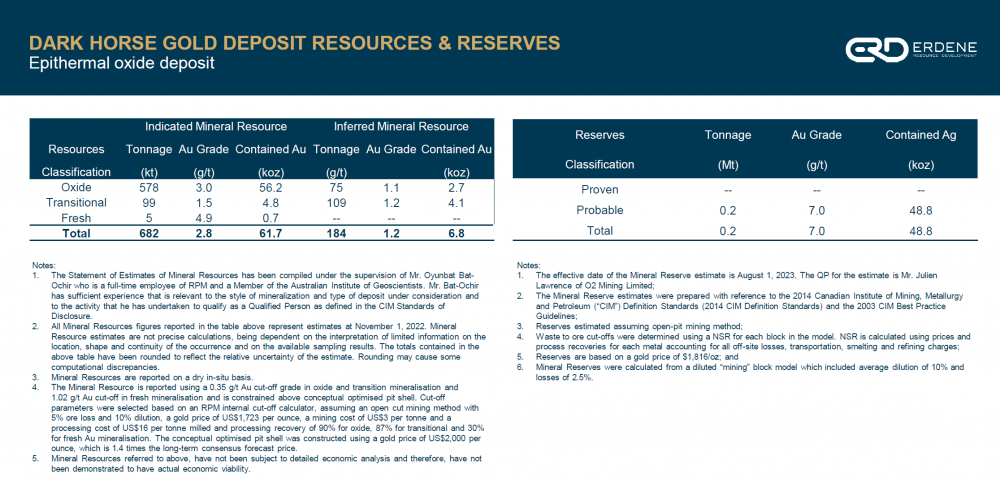Overview
Most of the drilling to date has been focused on the Dark Horse Mane discovered in early 2021. Erdene discovered the Dark Horse Mane, 2 kilometers north of the Bayan Khundii deposit, when initial drilling returned 6.0 g/t gold over 45 meters, beginning 10 meters downhole, including 8 meters of 27.1 g/t gold (AAD-58). Drilling over the past two years has defined a 1.5-kilometer trend of alteration and gold mineralization at Dark Horse Mane that remains open along strike to the north and south, and at depth. Highlight interceptions at Dark Horse Mane since the initial discovery include:
- AAD-58: 45 meters of 6.0g/t gold, including 22 meters of 12.0g/t gold.
- AAD-177: 23 meters of 11.4g/t gold, including 4 meters of 59.8g/t gold.
- AAD-178: 15 meters of 42.8g/t gold, including 5 meters of 123.5g/t gold
- AAD-146: 17 meters of 16.7g/t gold, including 3 meters of 65.0g/t gold
- AAD-137: 24.5 meters of 9.4g/t, including 13 meters of 16.1g/t gold
The Dark Horse Mane gold mineralization is associated with a north-south trending, linear structural corridor which intersects deep seated northeast trending transform faults, believed to be a conduit for primary mineralizing fluids, potentially from a magmatic porphyry source at depth. The N-S structure has been traced over five kilometers, from the southern portion of the Bayan Khundii deposit to the northern extension of Dark Horse Mane. Similar, parallel structures have also been identified east and west of Dark Horse Mane within the Greater Dark Horse area.
(Please note that these resource estimates are included within the Bayan Khundii Project Reserves and Resources).
Peter Dalton, P.Geo. (Nova Scotia), Senior Geologist, Erdene Resource Development Corporation, is a Qualified Person within the meaning of National Instrument 43-101 and has reviewed and approved the scientific and technical information contained herein.


